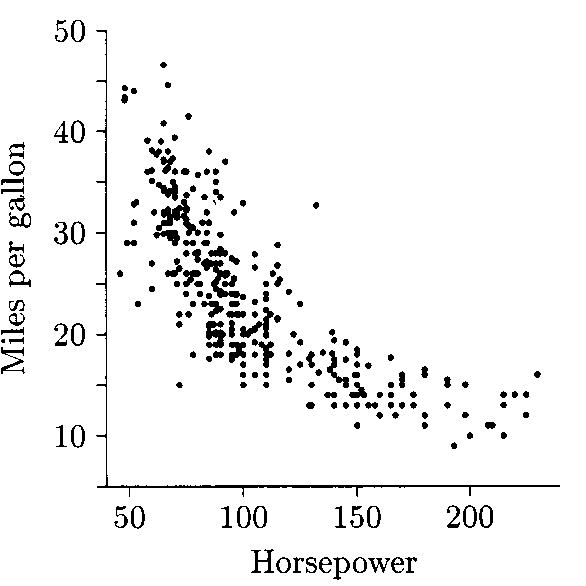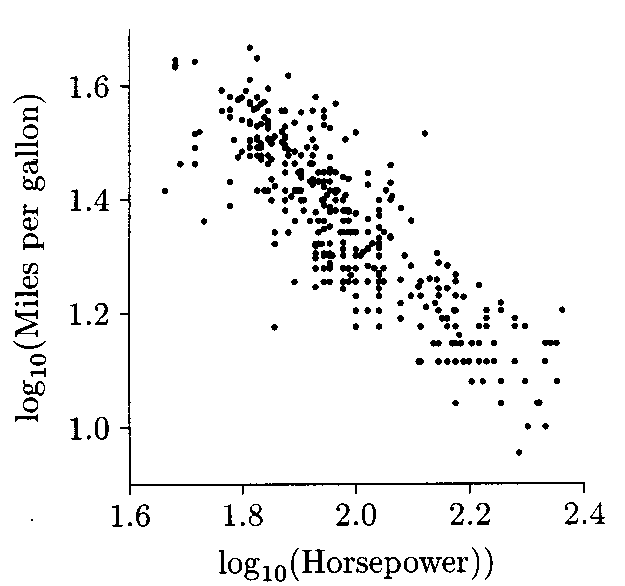| Mon | 5/5 | FPPA, Chapter 16 |
| Wed | 5/7 | FPPA, Chapter 17 |
| Fri | 5/9 | FPPA, Chapter 18 |
| Mon | 5/12 | FPPA, Chapter 19 |
Homework 5: due Wednesday 5/14
| Wed | 4/23 | FPPA, Chapter 12 |
| Fri | 4/25 | FPPA, Chapter 13 |
| Mon | 4/28 | FPPA, Chapter 14 |
Homework 4: due Wednesday 4/30
A box contains six tickets, three marked with a star, and the other three marked with a diamond. Two draws will be made at random without replacement from this box.
(a) Find the chance of getting a star on the first draw.
(b) Find the chance of getting a star on the first draw and a star on the second draw.
(c) Find the chance of getting a diamond on the first draw and a star on the second draw.
(d) Find the chance of getting a star on the second draw.
(e) Find the chance of getting a star at least once in the two draws.
(f) True or false, and explain: the events "star on the first draw" and "star on the second draw" are independent.
(g) True or false, and explain: the events "star on the first draw" and "star on the second draw" are mutually exclusive.
The question is devoted to an analysis of a simplified version of a game that is played on the TV show "The Price is Right." In our game there are two players, you and me. The goal is to get the highest total number of spots for one or two roles of a fair die, without going over 6. (On TV, the game is played with 3 contestants and a glorified 20 sided die.)
In more detail, our game is as follows. You start by rolling the die. Depending on the outcome of that roll, you can choose to roll the die again, or not. Your score is the total number of spots you roll. (For example, if your first roll is a 4 and you stop, your score is 4; but if your first roll is a 2 and you roll again and get a 5, your score is 7.) If your score is greater than 6, you lose (and I win). If your score is 6 or less, then I get to play, following the same rules. You win (and I lose) if my score is greater than 6, or less than or equal to your score. [The TV game allows ties, which are broken by a playoff; that complication is avoided here.]
Some questions to be addressed are: (Q1) what should your strategy be --- when should you stop after the first roll, and when should you roll again; (Q2) what is the chance that you win the game? In connection with (Q1), note that if your first roll is "low", then you'd want to roll again to try to raise your score and make it harder for me to beat you. On the other hand, if your first roll is "high", then you'd want to stop, since a second role would likely take you over the limit of 6. But just what scores are "low", and which are "high"?
Since we both want to win the game (and thus some neat prize), assume that we both play to our maximum advantage. For example, you shouldn't do something silly like roll a 6 and then roll again (in which case you'd turn a guaranteed win into a loss).
(a) To begin the analysis, suppose that you've taken your turn and gotten a score of 3. The task at hand is to work out the chance that you win the game, conditional on your having this score. The only ways you can win are for me to:
Fill in the listing of the ways you can win. Are the ways mutually exclusive? Find the chance of your winning (show your work) and enter that number in the following table:
| k | Chance | |
| 1 | 0.0278 | |
| 2 | 0.1111 | |
| 3 | ||
| 4 | 0.4444 | |
| 5 | 0.6944 | |
| 6 | 1.0 |
(b) Now let's back up a step. Suppose it is your turn and you have just rolled a 3 on your first roll. Whether you should stop or roll again depends on which option gives you the better chance of winning. If you stop, your score will be 3 and your chance to win is what you found in part (a). The task at hand is to work out your chance to win if you make the second roll. Assuming that you do make that roll, the only ways for you to win are for you to:
Fill in the listing of the ways. Are the ways mutually exclusive? Find the chance of your winning (show your work) and enter that number in the following table:
| k | Chance | |
| 1 | 0.4167 | |
| 2 | 0.3982 | |
| 3 | ||
| 4 | 0.2824 | |
| 5 | 0.1667 | |
| 6 | 0.0 |
(c) Now it's time to write down your optimal strategy. Fill in the blank in the following table, and explain briefly.
| k | Roll again? | |
| 1 | Yes | |
| 2 | Yes | |
| 3 | ||
| 4 | No | |
| 5 | No | |
| 6 | No |
(d) Finally, it's time to work out the chance that you beat me. The ways you can do that are:
Complete the listing of the ways. Are the ways mutually exclusive? Find the chance that you win the game (show your work).
[Footnote: The game on TV can be simulated with a 20-sided die, with faces numbered from 1 to 20. There are three contestants, A, B, and C. A goes first, then B, then C. The one with the highest total not exceeding 20 for one or two spins wins. A tie for the highest total is broken by a playoff that gives each participant an equal chance to win.
The optimal strategies are as follows:
If the players all use their optimal strategies, their chances of winning are: A, 30.8%, B, 33.0%; C, 36.2%. The game is nearly fair, although C has a slight edge over B, and B a slight edge over A.]
| Mon | 4/14 | FPPA, Chapter 8. (Also read Chapter 7 if you need to review about plotting points and lines.) |
| Wed | 4/16 | FPPA, Chapter 9 |
| Fri | 4/18 | FPPA, Chapter 10 |
| Mon | 4/21 | FPPA, Chapter 11 |
| Wed | 4/23 | FPPA, Chapter 12 |
Homework 3: due Wednesday 4/23
| Father's Height | Mother's Height | ||
| 67 | 62 | ||
| 72 | 64 | ||
| 67 | 65 | ||
| 71 | 68 | ||
| 70 | 63 | ||
| 72 | 65 | ||
| 67 | 60 | ||
| 64 | 66 | ||
| 74 | 61 | ||
| 72 | 71 | ||
| Average | 69.6 | 64.5 | |
| SD | 3.01 | 3.14 |
(a) What height would you predict for the mother of a student in the class, if you didn't know the father's height? Explain briefly.
(b) Draw the scatter diagram of Mother's Height (vertical axis) on Father's Height (horizontal axis). Use a sheet of graph paper. How would you characterize the relationship between these two variables?
(c) Suppose the father of a student in the class is 73 inches tall. How tall would the student's mother have be to lie on the SD line?
(d) On your scatter diagram, mark the point of averages and draw (use a straight edge) the SD line. Clearly label the point and the line.
(e) Calculate the correlation between Father's Height and Mother's Height.
(f) For the student in part (b), calculate the regression estimate of the mother's height.
(g) Draw the regression line for predicting Mother's Height from Father's Height on your scatter diagram. Clearly label the line.
(h) Which line, the SD line or the regression line, appears to do a better job at predicting Mother's Height from Father's Height, for this data set. Explain briefly.
(i) Roughly speaking, how useful is Father's Height for predicting Mother's Height?


(a) Would it be appropriate to use the regression method to predict Mpg from Hpw? Explain briefly. (b) Would it be appropriate to use the regression method to predict log10(Mpg) from log10(Hpw)? If so, how could you then predict Mpg from Hpw? Explain briefly.
| Mon | 4/07 | FPPA, Chapter 4 |
| Weds | 4/09 | FPPA, Chapter 5 |
| Fri | 4/11 | FPPA, Chapter 6 |
Homework 2: due Weds 4/16
(a) Find the averages and SDs in degrees centigrade (degrees centigrade = (5/9)(degrees Fahrenheit - 32)).
(b) Just roughly, what percentage of the April temperatures lie between 51 and 73 degrees Fahrenheit?
(c) If you took all the days in April and May together, would the SD of the daily highs in degrees Fahrenheit be somewhat less than 10.5, just about 10.5, or somewhat more than 10.5? Why?
| Mon | 3/31 | FPPA, Chapter 1 |
| Weds | 4/02 | FPPA, Chapter 2 |
| Fri | 4/04 | FPPA, Chapter 3 |
Homework 1: due Weds 4/09
| Number of cigarettes | Percent |
| 0-1 | 82 |
| 1-5 | 10 |
| 5-10 | 6 |
| 10-20 | 2 |